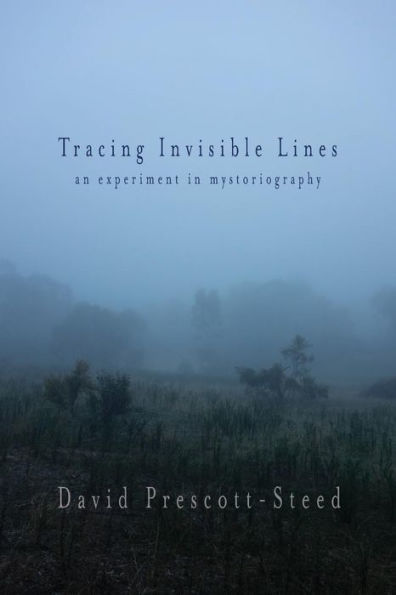TRACING INVISIBLE LINES is a critical autoethnographic text built around Gregory Ulmer's concept of the "Mystory." Dedicated to the enhancement of imagination and innovation in a digital-media saturated society, Ulmer's Mystory is a creative research method that draws narratives from three domains of discourse (personal, professional, popular). Analysing these domains means generating fresh insight into the deep-seated emblems that drive the creative disposition, or "invariant principle," of the practice-led researcher. Here, the mystoriographical approach has mobilized an exploration of the interrelations between self and society, between memory and imagination, as well as between industry-driven design-arts education and experimental sound-art practice (prioritizing the sonic, the perambulatory, careering). As a result, the Mystory fosters critical awareness of the socio-cultural instruments of creative inspiration and perspiration.
Reflexive in intent and experimental in approach, David Prescott-Steed's hybrid writing style moves freely between art historical, biographical and autobiographical, academic and speculative moods. This book's emphasis on an electronic, investigative sound-based practice finds it treading new ground between the sonic arts and the field of electracy; through its addition of sound and music to the genre, this book extends the scope of studies into Ulmer's work beyond English literature and the ocularcentric arts, offering a new handbook for sonic conceptual art practice.
David Prescott-Steed is an artist and writer whose creative practice is focused on found sound processing and improvisation. Recordings of his work have been presented at numerous international events and released through labels such as Gruenrekorder (DE), Green Field Recordings (PT), and Impulsive Habitat (PT). David's scholarly writing has appeared in Textshop Experiments, The Journal for Artistic Research, Kinema, Helvete, Qualitative Research Journal, and elsewhere. His first book, The Psychogeography of Urban Architecture, was published in 2013 by Brown Walker Press (US).
TRACING INVISIBLE LINES is a critical autoethnographic text built around Gregory Ulmer's concept of the "Mystory." Dedicated to the enhancement of imagination and innovation in a digital-media saturated society, Ulmer's Mystory is a creative research method that draws narratives from three domains of discourse (personal, professional, popular). Analysing these domains means generating fresh insight into the deep-seated emblems that drive the creative disposition, or "invariant principle," of the practice-led researcher. Here, the mystoriographical approach has mobilized an exploration of the interrelations between self and society, between memory and imagination, as well as between industry-driven design-arts education and experimental sound-art practice (prioritizing the sonic, the perambulatory, careering). As a result, the Mystory fosters critical awareness of the socio-cultural instruments of creative inspiration and perspiration.
Reflexive in intent and experimental in approach, David Prescott-Steed's hybrid writing style moves freely between art historical, biographical and autobiographical, academic and speculative moods. This book's emphasis on an electronic, investigative sound-based practice finds it treading new ground between the sonic arts and the field of electracy; through its addition of sound and music to the genre, this book extends the scope of studies into Ulmer's work beyond English literature and the ocularcentric arts, offering a new handbook for sonic conceptual art practice.
David Prescott-Steed is an artist and writer whose creative practice is focused on found sound processing and improvisation. Recordings of his work have been presented at numerous international events and released through labels such as Gruenrekorder (DE), Green Field Recordings (PT), and Impulsive Habitat (PT). David's scholarly writing has appeared in Textshop Experiments, The Journal for Artistic Research, Kinema, Helvete, Qualitative Research Journal, and elsewhere. His first book, The Psychogeography of Urban Architecture, was published in 2013 by Brown Walker Press (US).

Tracing Invisible Lines: An Experiment in Mystoriography
178
Tracing Invisible Lines: An Experiment in Mystoriography
178
Product Details
| ISBN-13: | 9781643170756 |
|---|---|
| Publisher: | Parlor Press |
| Publication date: | 02/28/2019 |
| Series: | Electracy and Transmedia Studies |
| Pages: | 178 |
| Product dimensions: | 6.00(w) x 9.00(h) x 0.41(d) |
